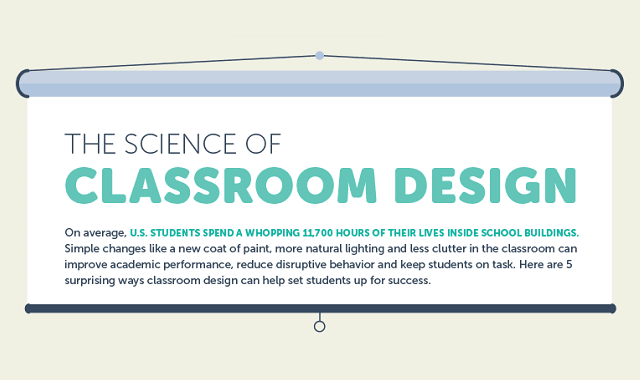Is your classroom a brain-friendly learning environment? See what science has to say. Studies show that variables in your physical classroom are a significant determinants of student’s academic success, behavioral outcomes and standardized test scores. Classrooms that include color, full-spectrum lighting, and are devoid of visual noise clutter result in improved academic performance and decreased disruptive behavior.
The Science of Classroom Design is an infographic created by USC Rossier School of Education that outlines the variables inside the classroom that impacts student learning outcomes.
The university’s graphic also provides teachers with actionable steps on how to implement these scientific best practices in the classroom. While budget restraints may inhibit teachers from enacting all of these best practices, it’s important for schools and teachers to focus the bottom line: creating inclusive spaces that focus on holistic learning for all students. The main takeaways of these classroom design theories are that we have to create learning environments that help meet the needs of all students, and that we differentiate not only our instruction, but also our design.

Infographic by: rossieronline.usc.edu
The Science of Classroom Design is an infographic created by USC Rossier School of Education that outlines the variables inside the classroom that impacts student learning outcomes.
The university’s graphic also provides teachers with actionable steps on how to implement these scientific best practices in the classroom. While budget restraints may inhibit teachers from enacting all of these best practices, it’s important for schools and teachers to focus the bottom line: creating inclusive spaces that focus on holistic learning for all students. The main takeaways of these classroom design theories are that we have to create learning environments that help meet the needs of all students, and that we differentiate not only our instruction, but also our design.

Infographic by: rossieronline.usc.edu

